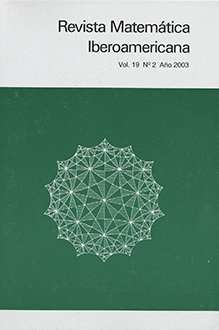Abstract
Let $(X,\mathcal{B}, \mu, T)$ be an ergodic dynamical system on a non-atomic finite measure space. Consider the maximal function $$ R^* : (f, g) \in L^1 \times L^1 \rightarrow R^*(f, g)(x) = \sup_{n} \frac{f(T^n x) g(T^{2n} x)}{n}. $$ We show that there exist $f$ and $g$ such that $R^*(f, g)(x)$ is not finite almost everywhere. Two consequences are derived. The bilinear Hardy-Littlewood maximal function fails to be a.e. finite for all functions $(f, g)\in L^1\times L^1$. The Furstenberg averages do not converge for all pairs of $(L^1,L^1)$ functions, while by a result of J. Bourgain these averages converge for all pairs of $(L^p,L^q)$ functions with $\frac{1}{p}+\frac{1}{q} \leq 1$.
Citation
Idris Assani . Zoltán Buczolich . "The $(L^1,L^1)$ bilinear Hardy-Littlewood function and Furstenberg averages." Rev. Mat. Iberoamericana 26 (3) 861 - 890, September, 2010.
Information





